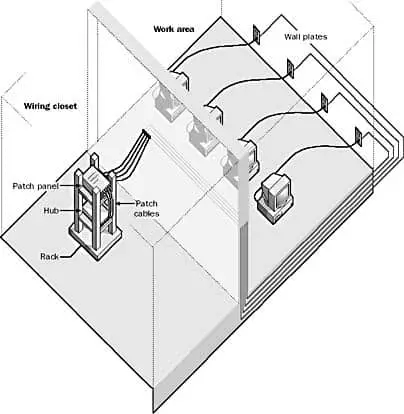10BaseT was a type of standard for implementing Ethernet networks using unshielded twisted-pair (UTP) cabling for connecting stations and using hubs to form a network. To learn more continue reading.
What is 10BaseT?
A type of standard for implementing Ethernet networks. 10BaseT is the most popular form of 10-Mbps Ethernet, using unshielded twisted-pair (UTP) cabling for connecting stations, and using hubs to form a network. 10BaseT supports a maximum bandwidth of 10 Mbps, but in actual networks, the presence of collisions reduces this to more like 4 to 6 Mbps. 10BaseT is based on the 802.3 specifications of Project 802 developed by the Institute of Electrical and Electronic Engineers (IEEE).

How 10BaseT Work?
10BaseT networks are wired together in a star topology to a central hub. The UTP cabling used for wiring should be category 3 cabling, category 4 cabling, or category 5 cabling, terminated with RJ-45 connectors. Patch panels can be used to organize wiring and provide termination points for cables running to wall plates in work areas. Patch cables then connect each port on the patch panel to the hub. Usually, most of the wiring is hidden in a wiring cabinet and arranged on a rack for easy access.
The maximum length of any particular segment of a 10BaseT network is 100 meters. If distances longer than this are required, two or more segments must be connected using repeaters. The minimum length of a segment should be 2.5 meters. By using stackable hubs or by cascading regular hubs into a cascaded star topology, you can network large numbers of computers using 10BaseT cable. Although they support up to 1024 nodes, collision domains supporting no more than 200 or 300 nodes will yield the best performance.
NOTE
The maximum length of a 10BaseT cable segment is not a result of the specifications for round-trip communications on an Ethernet network, but rather a limitation caused by the relatively low signal strength of 10BaseT systems. With enhanced category 5 cabling, you might be able to sustain network communications effectively with cable lengths up to about 150 meters, although this is not normally recommended.
TIP
When wiring a 10BaseT network, use enhanced category 5 cabling. This will make it unnecessary to rewire your network should you decide to upgrade to Fast Ethernet.